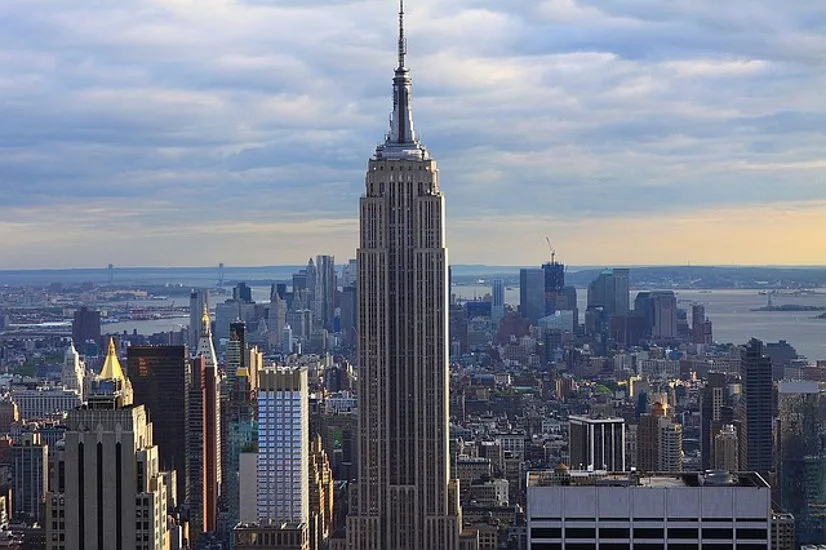Why Aluminum is the Key to Sustainable Building Construction

As the New York City skyline changes around it, the Empire State Building has remained a constant. Built between 1930 and 1932, the building, with its pointed spire towering above the city, remains a feat in skyscraper engineering.
That iconic spire is made of aluminum, as are the building’s window frames that replaced previous steel frames after water leaks in 1994. Considering additional recent improvements made this year, it’s no surprise that when it came time to replace or restore eroding material on the building, renovators focused on aluminum.
As sustainable building becomes an increasingly higher priority to lessen the impact of climate change, it’s aluminum’s time to shine. In the midst of a new decade and with an increased mandate to lessen the carbon footprint in building, aluminum stands as an increasingly attractive option to turn to for both sustainable and stylish living.
For example, aluminum factors heavily into the idea of an environmentally conscious mid-century design home, which has seen a resurgence over the past few decades. It’s prevalent on curtain walls, roofing, shelves, and solar shading and panels. The mid-century style brings with it an ability to reflect sunlight, which means buildings can be cooled for less money, and its large glass windows made of aluminum are a deterrent for high air conditioning and lighting bills. Dating back to the 1930s, the mid-century home has long been an in-vogue design for contemporary and green living. With its open floor plans and large windows to let light in, home dwellers have decreased the barriers between the flow of their space and allowed for daytime energy power sources. Making smaller spaces feel larger reduces the urge for more square footage and preserves land that might otherwise be built on.
It’s important to be cognizant of the types of materials used in these builds. In comparing wood and aluminum for the siding of buildings and homes, aluminum is a superior option. Where wood requires constant maintenance, aluminum is durable and cost-effective. Aluminum siding is all but immune to denting, extremely weather-resistant, and doesn’t rot. It can help set the temperature in countries with colder and warmer climates alike, keeping warmth in or acting as a fire-resistant agent in arid climates. And, for those who like a wood look but want to stay environmentally friendly, there are digitally imprinted wood textures that can be added onto siding while still maintaining an original aluminum base.
With the increased emphasis on construction that achieves LEED certification through sustainable design, aluminum — with its low density and ability to conduct heat — stands poised to be a natural catalyst for a greener future. This means limiting carbon emissions, increasing water conservation, and capturing natural light in lieu of electricity. Studies show that buildings with LEED certification show a 20% lower maintenance cost on commercial buildings, as well as increasing property value. Not only is green building the smart thing to do, it’s also an effective way to reduce overhead costs and save money.
What’s more, aluminum is 100% recyclable, which means it’s malleable and doesn’t lose any of its beneficial properties from one use to the next. It reflects 95% of solar energy when properly coated, reducing the need for high energy usage in controlling temperature inside buildings. And its resistance to corrosion equates to a long-term reduction in building repair that often otherwise leaves a large environmental footprint.
The question then becomes what to do with this knowledge. With Joe Biden’s incoming presidential administration set to appoint John Kerry as the United States’ first ever cabinet-level climate czar, the imperatives surrounding sustainability and curbing climate change will be at the forefront perhaps in a way not seen before.
Hypermodern projects like New York City’s 2019 Hudson Yards build, where aluminum is featured prominently throughout, are the wave of the future. If this heavy use of the material is any indication, the metal will be an integral and lasting part of large-scale, greener construction.
More eyes than ever will be on the choices builders make as it relates to environmental impact. It’s not an overstatement to say that when it comes to climate change, the world finds itself at a crossroads. The decisions stakeholders make in planning their construction projects — and how these projects will subsequently aid in a more sustainable future — will play a large part in the story of the worldwide fight against climate change. Using the resources at our disposal and being smart with the types of materials we use not only makes smart business sense. It’s also just the right thing to do.